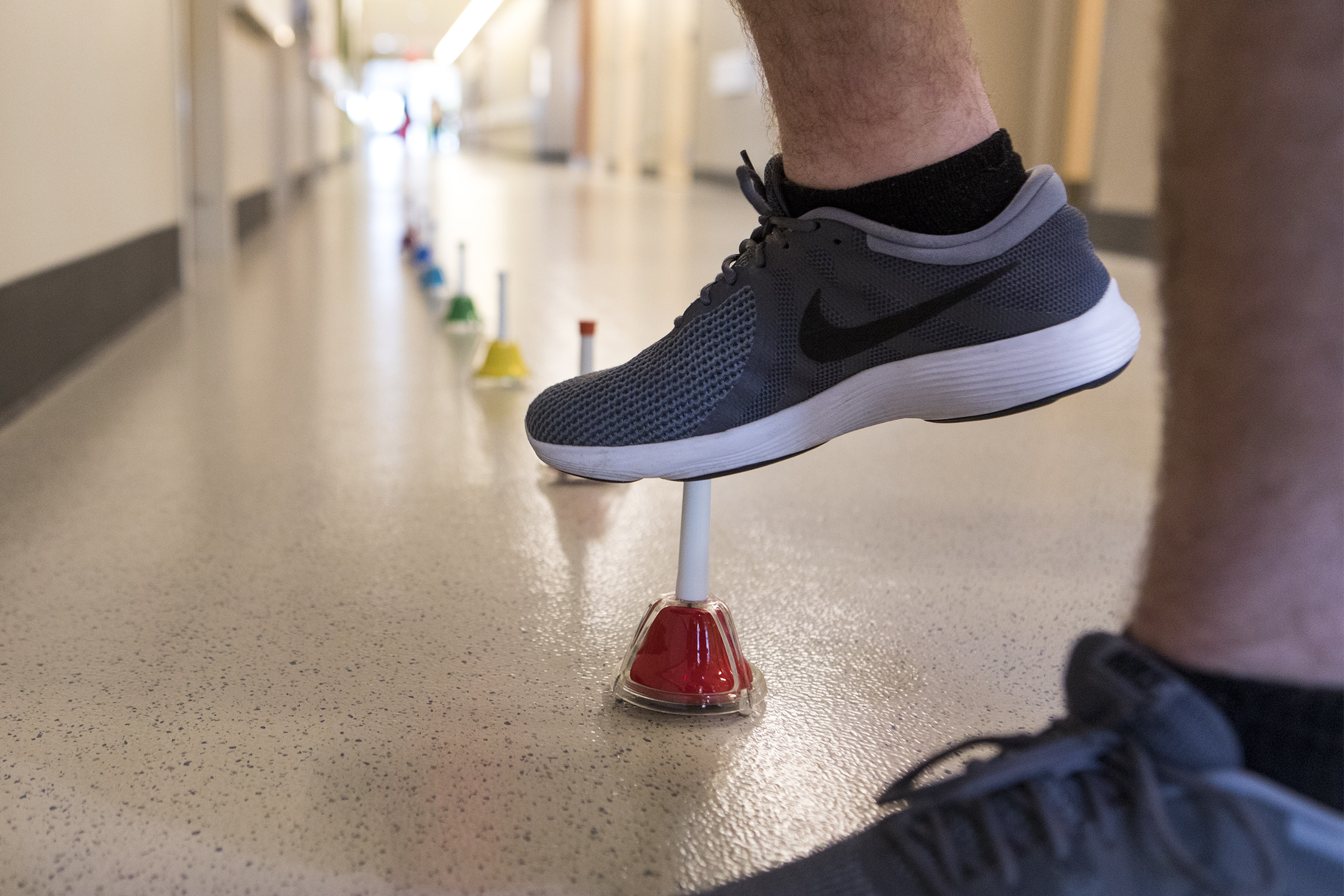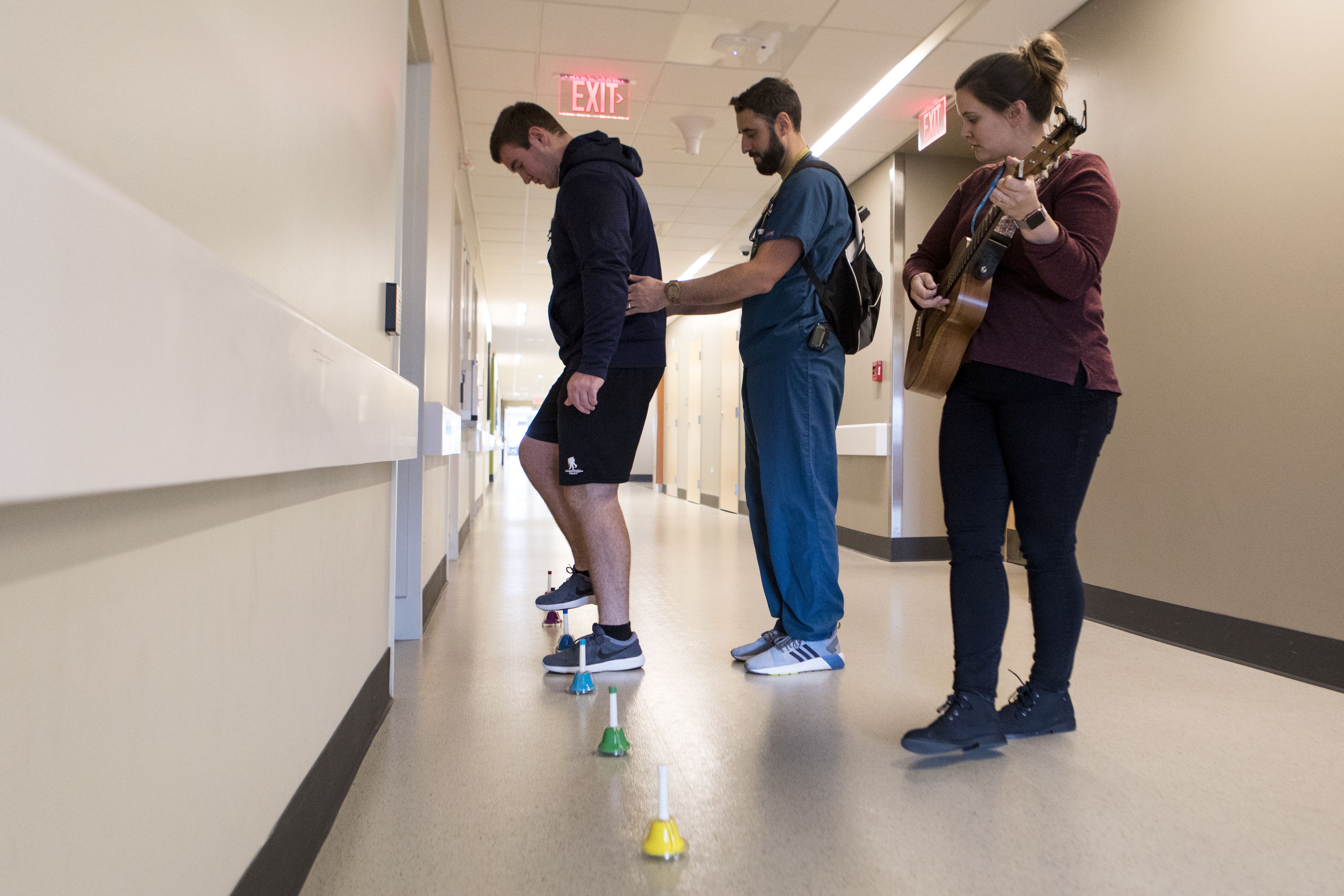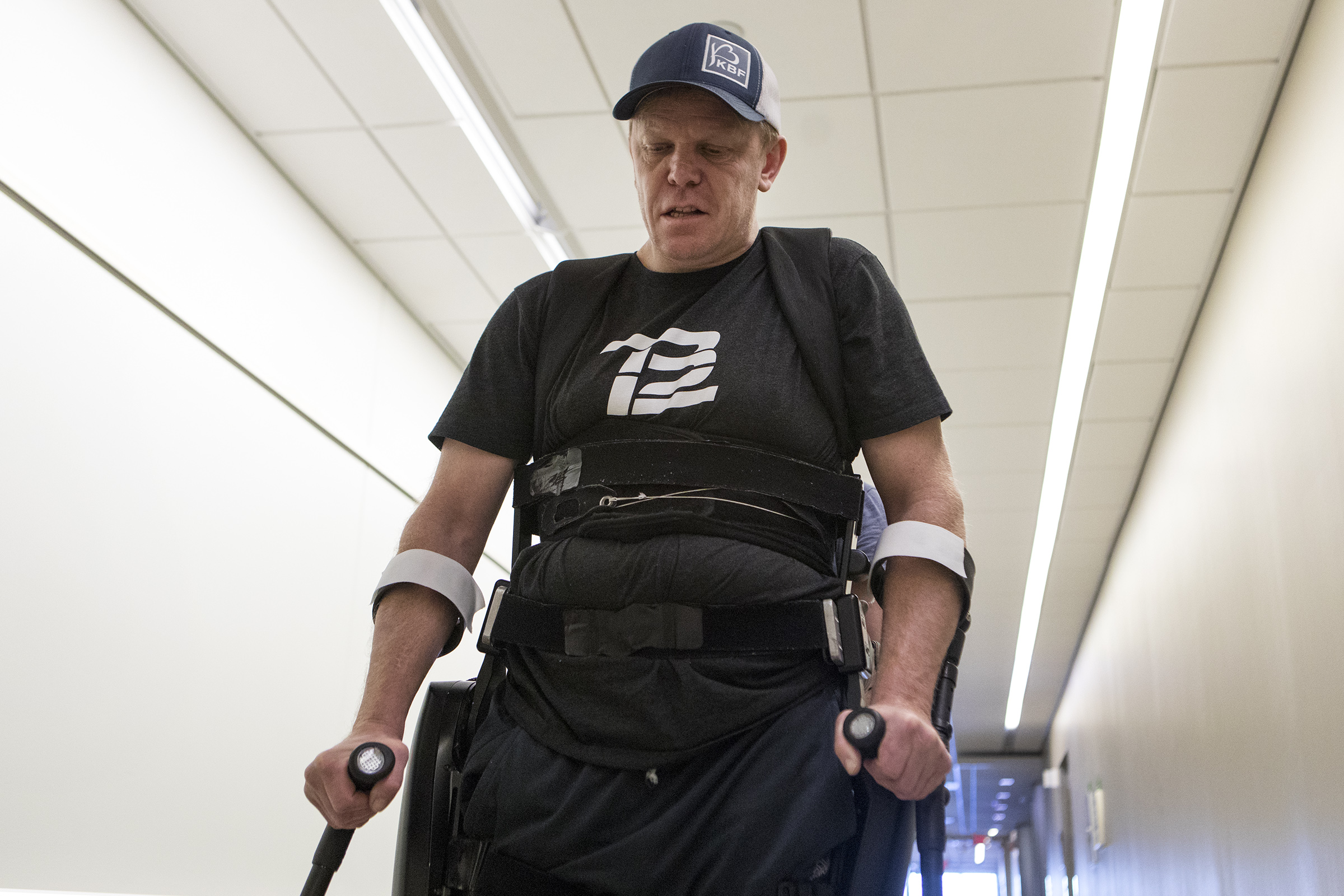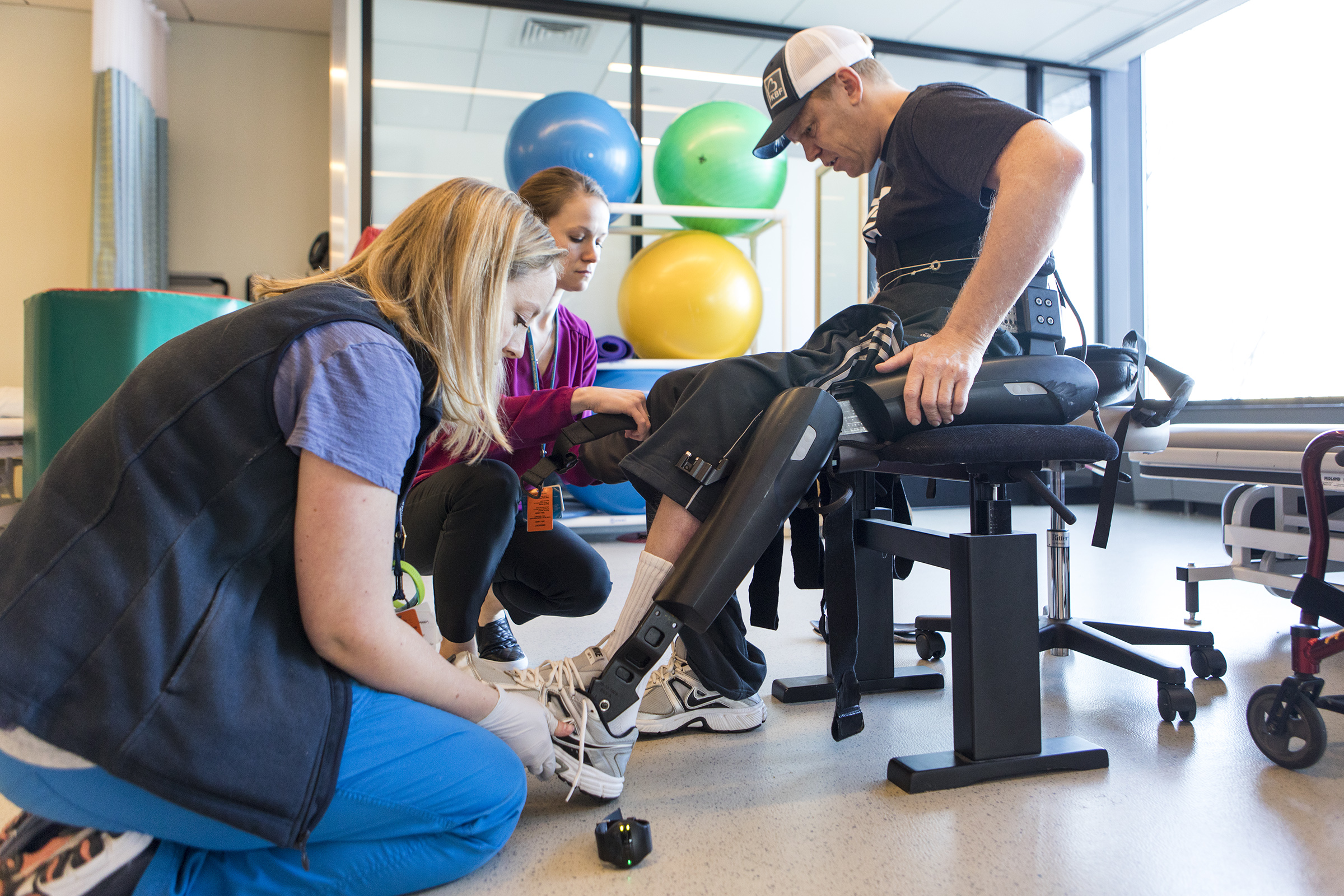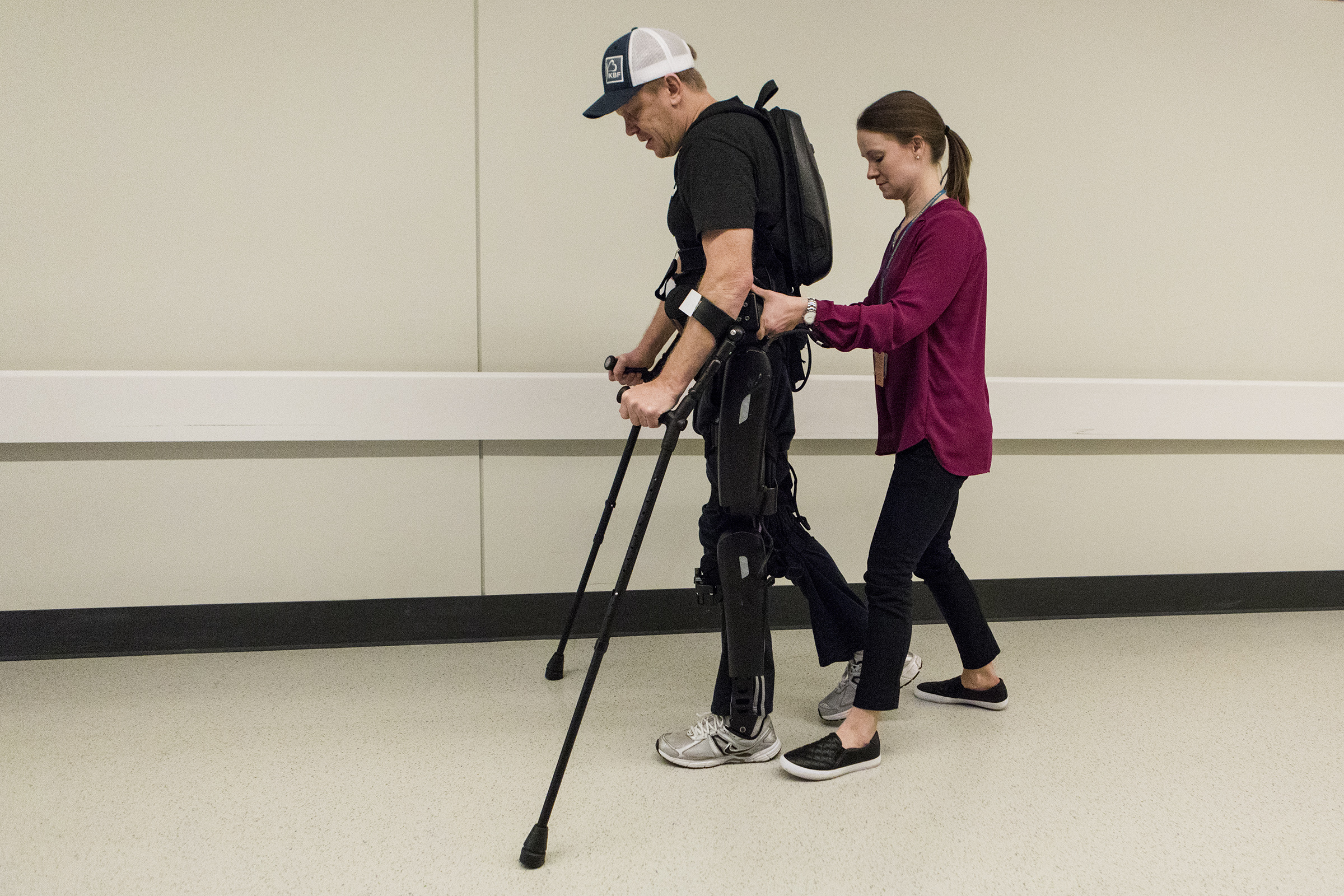A therapy device that looks like it belongs on a Hollywood movie set is an exoskeleton. Physical therapists at Spaulding have used it for inpatient and outpatient therapy for several years, according to Daniel Meninger, director of programs at the rehabilitation hospital.
The device has helped patients like David Wieselmann, 47, of Braintree, who was paralyzed from the chest down after a mountain bike accident eight years ago.
Physical therapists Trina Modoono and Julie Shane tightened Velcro straps around Wieselmann’s waist and legs to get him into the exoskeleton. Battery-powered, with motors at the hip and knee joint, the exoskeleton senses a forward tilt of the upper body to initiate the first step. Subsequent body shifting results in more steps that mimic the natural gait of the legs. The exoskeleton Wieselmann used is made by ReWalk Robotics Inc. of Marlborough.
“Losing my ability to walk was a nightmare,” Wieselmann said earlier this month as he walked a complete rotation around one of the hospital floors in the exoskeleton, using forearm crutches to help maintain his balance. The workout appeared to take considerable upper-body strength, and when Wieselmann finished the circuit, he proclaimed, “It felt great.”
As Meninger watched Wieselmann navigate the floor, he described the exoskeleton’s benefits.
The device promotes bone health, blood pressure control and increased bowel function. It also gives a psychological boost, because a patient can stand up and experience the world at the eye level they once enjoyed.
“That is a huge piece of it,” Meniniger said of the psychological component to patient care.
Other devices that help patients relearn how to walk, stand and sit after a spinal cord injury include a robotic-assisted treadmill called a Lokomat, and the Vector Gait & Safety System, which straps a patient in a harness attached to a runner on the ceiling.
Drug therapy includes experimenting with existing drugs to see if they have applications for spinal cord injuries. Walker takes low doses of anti-depressants Prozac and Buspar, Robbie Walker said, because they stimulate the neurological network that carries messages from the brain to the spinal cord.
Medical trials have shown Prozac to improve motor recovery in some cases of stroke, according to Dr. Chloe Slocum, a spinal cord injury physician at the Spaulding. Buspar has not reached human drug trials for spinal cord injury, but Slocum said doctors believe it may improve motor recovery.
Slocum is involved in a medical trial at Spaulding that uses Rho inhibitors to target the swelling of the spinal cord. If the inhibitors reduce swelling, then damaged nerves could be regenerated.
Another trial involves what Slocum called “the equivalent of two cups of coffee at Dunkin’ Donuts”: intermittent, low-oxygen therapy that simulates the high altitude experienced by mountain climbers. The goal is to improve motor recovery after a spinal cord injury and three elements are combined in this trial – assisted walking therapy, low-oxygen therapy, and a low dose of caffeine that equals those two cups of coffee.
Slocum laid out the medical protocols for spinal cord injuries and each step must be done quickly. They include: getting to the victim and stabilizing them, using imaging devices to pinpoint the damage, and if surgery is required to reduce swelling, making sure the patient is seen, and evaluated, right away.
Meninger acknowledged there is still a long way to go to treat spinal cord injuries, including patient access to the latest technologies. One barrier is that insurance does not cover the cost of many devices, so patients have to pay out-of-pocket for them. Medical personnel are optimistic when it comes to the exoskeleton, Meninger said, because manufacturers are working to make them lighter, smaller, quieter, and more affordable.
“I would equate (exoskeletons) to the first computers,” Meninger said of those big, clunky machines that once took up an entire room, and can’t do a fraction of what today’s hand-held, mobile devices can accomplish. Affordable exoskeletons could be on the market in five to 10 years, Meninger said.
Technological advances are important, but so is society’s acceptance of people with spinal cord injuries. Gone is the public’s assumption that all such injuries result in a lifetime spent in a wheelchair, with limited access to career and social pursuits.
“There’s no stigma anymore,” Meninger said.
Wieselmann is an example of someone living life to the fullest. He spent the past summer working in a paid job, kayaking around Seymour Lake in Vermont looking for invasive species. He boasted he can circumnavigate the entire 12-mile lake.
He also founded wheretowheel.us, a website that lists disabled-accessible restaurants, bars, cafes and other venues. It is a tool to build connections in the disabled community.
“Science has come a million miles” since his accident eight years ago, he said before embarking on another exoskeleton walk at Spaulding.
“Nothing has changed about me,” he said. “I just can’t walk.”
Follow Henry Schwan on Twitter @henrymetrowest. He can be reached at hschwan@wickedlocal.com or 508-626-3964.
